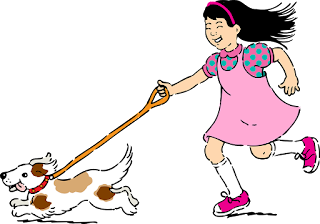Your dog is overweight?
Obesity is a nutritional disease which is defined by an excess of body fat. Dogs that are over nourished, lack the ability to exercise, or that have a tendency to retain weight are the most at risk for becoming obese. Obesity can result in serious adverse health effects, such as reducing the lifespan, even if your dog is only moderately obese. Multiple areas of the body are affected by excess body fat, including the bones and joints, the digestive organs, and the organs responsible for breathing capacity.
Obesity is common in dogs of all ages, but it usually occurs in middle-aged dogs, and generally in those that are between the ages of 5 and 10. Neutered and indoor dogs also tend to have a higher risk of becoming obese.
With 35 million or 45 percent of American dogs overweight or obese, putting your pooch on a diet might just be on the cards. Do you know if your dog needs to lose weight or are you still calling it “puppy fat”? While owners are busy spoiling their canine friends with treats, extra food, and cookies as a show of love, the reality is that an overweight dog is neither happy nor healthy, and if your dog falls into this category, it’s time to fix it, immediately.
How To Know If Your Dog Is Obese?
If you’re not sure, pat your hands along your dog’s sides from head to tail. In a healthy-weight dog, you should be able to just feel the ribs. Also, take a look at your dog from the side. Most dogs should have a slightly “tucked up” profile. If all you feel are fat pads on your dog’s sides, or if his side profile is more sausage-like than sleek, chances are your friend may need to shed a few.
The first thing you should do is get your vet involved. Take your dog for a checkup as there are underlying conditions that can contribute to obesity, including diabetes, Cushing’s disease and hypothyroidism. Have your veterinarian determine your dog’s current and ideal body weight and then tell you how many calories your dog can eat each day in order to reach that ideal weight. Your goal should be to work toward that ideal weight over a several-month period.
Symptoms
- Weight gain
- Excess body fat
- The inability (or unwillingness) to exercise
- An above-ideal score in a body condition assessment.
 There are several causes of obesity. It is mosty commonly caused by an imbalance between the energy intake and its usage — eating more than the dog can possibly expend. Obesity also becomes more common in old age because of the normal decrease in a dog’s ability to exercise. Unhealthy eating habits, such as high-calorie foods, an alternating diet, and frequent treats can also bring on this condition.
There are several causes of obesity. It is mosty commonly caused by an imbalance between the energy intake and its usage — eating more than the dog can possibly expend. Obesity also becomes more common in old age because of the normal decrease in a dog’s ability to exercise. Unhealthy eating habits, such as high-calorie foods, an alternating diet, and frequent treats can also bring on this condition.
- Too much strenuous exercise can be a hazard for your dog. Talk with your vet about how much exercise your dog should be getting.
- If you make exercising the dog a task for your kids, make sure that they know how to properly walk a dog, help her when she is hurt, etc. Make sure they bring water for the dog. Also, if you have a young child, always have an adult accompany them on walks to avoid danger.
- Always research foods before giving them as treats to your dogs. For example, grapes, raisins, chocolate, and onions can be very toxic to dogs.
- Never restrict access to water; it should always be clean and freely available unless a vet requires otherwise.
- A dog that is left outside during winter needs double the usual amount of high quality dog food. Talk to your vet about any issues this might cause if you have an overweight outside dog.

